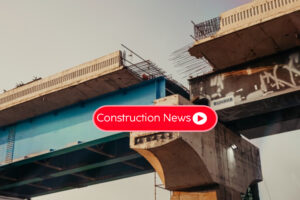Bali, much like other major cities, is grappling with the growing issue of traffic congestion. But what if future travels in this exotic paradise are no longer hampered by traffic jams, offering smoother and more efficient mobility? The government is gearing up to introduce two cutting-edge transportation projects that promise to revolutionize how people get around: the Light Rail Transit (LRT) and Bali Urban Rail. What are these systems, and how do they differ? Let’s delve into these innovative transportation solutions and their potential impact on Bali.
With the rapid growth of tourism and a rising population, Bali faces significant challenges in managing traffic and providing adequate transportation. According to recent data released by the Bali Central Statistics Agency on June 3, 2024, 503,194 foreign tourists visited Bali in April 2024, a 7.24% increase from March 2024.
This surge in visitors has exacerbated traffic problems, particularly in key tourist areas like Kuta, Seminyak, and Ubud, where congestion is a common complaint among locals and tourists. The need for efficient and modern public transportation has become urgent to enhance mobility and comfort for everyone.
In response to these challenges, the Bali government has announced ambitious plans to develop two rail-based transportation systems: the LRT and Bali Urban Rail. These projects aim not only to alleviate traffic congestion but also to improve the quality of life and support environmental sustainability in Bali.
Differentiating LRT Bali and Bali Urban Rail
The government is planning the construction of an LRT system in Bali, which at first glance appears similar to the Bali Urban Rail project initiated by the Bali Provincial Government. So, what distinguishes these two projects?
Risal Wasal, Director General of Railways at the Ministry of Transportation (Kemenhub), explained that the Bali LRT is part of the broader Bali Urban Rail development plan for mass transportation in Bali. For example, the Bali Urban Rail project includes feeder services to support the LRT.
“They will provide feeder services for what we create. For instance, [the LRT] will reach Central Park Bali, and from there, they will prepare the connecting transport,” said Risal in Makassar, South Sulawesi, as quoted on Monday, June 17, 2024.
Risal also noted that the feasibility study for the Bali LRT project, conducted by a South Korean consortium, has been completed. The study estimates that the project will require around US$876 million, equivalent to Rp14.2 trillion.
He mentioned plans to finance the project through foreign loans but did not specify the exact loan amount the government would secure. However, several foreign investors have already expressed interest in funding the project.
“The United Arab Emirates [UAE] and the UK are interested. Many countries are keen to develop railways in Bali,” Risal added.
Integrating Bali Urban Rail with LRT Bali
While preparing the Bali Urban Rail project, the Ministry of Transportation (Kemenhub) also plans to develop the Light Rail Transit (LRT) system in Bali. Risal emphasized that the Bali Urban Rail lines will facilitate access to the Bali LRT stations.
“They are providing feeder services for what we build. For example, from Central Park, what transport will be used? They will prepare the feeder services,” he said at RS PIP Makassar on Thursday, June 13, 2024.
“But their focus is on facilitating easy access to the Bali train line,” Risal added.
The Bali LRT will traverse several routes, stretching from Ngurah Rai International Airport to Central Park, Kuta, and Seminyak. Parts of the LRT will be constructed underground. The government is considering Public Private Partnership (PPP) and Government and Business Entity Cooperation (KPBU) after receiving loans from Korea.
Meanwhile, Acting Governor of Bali Sang Made Mahendra Jaya urged the immediate commencement of the Bali Urban Rail project once planning is complete. Mahendra targets the construction of the Bali Urban Rail lines and trains to begin in 2024.
“If ready, it can be built immediately. We are preparing it now. (Target start in 2024) is our hope. I await its readiness,” Mahendra Jaya said in Sanur, Denpasar, Bali, on Monday, June 10, 2024.
Positive Impacts of LRT and Bali Urban Rail
The implementation of LRT and Bali Urban Rail is expected to bring significant positive impacts to Bali. Economically, these projects will create new jobs, attract infrastructure investment, and stimulate business growth around the new transportation routes. Environmentally, the use of electric transportation will reduce carbon emissions and air pollution, contributing to Bali’s environmental sustainability.
With the arrival of LRT and Bali Urban Rail, Bali is moving towards a future of modern, efficient, and eco-friendly transportation. These projects are expected to solve traffic congestion issues, improve the quality of life for residents, and support local economic development. For Bali, this is a crucial step towards more sustainable and inclusive growth. Let’s look forward to the positive changes that LRT and Bali Urban Rail will bring, transforming transportation in the Island of the Gods.



 20% off today. Whatsapp us!
20% off today. Whatsapp us!